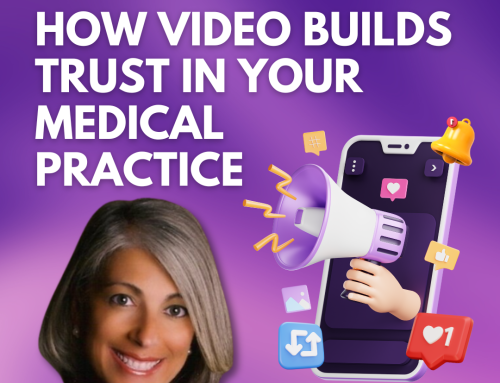There is a unique opportunity for healthcare providers to engage patients meaningfully. By personalizing healthcare experiences, optimizing digital presence, fostering community engagement, and prioritizing transparency, healthcare brands can establish lasting relationships with female patients.
As women continue to take charge of their health and wellness, healthcare providers and marketers must develop targeted strategies that effectively engage this influential demographic. Women are often the primary decision-makers for their families’ healthcare needs, making their engagement essential for practice growth and brand loyalty. Here are key strategies to connect with and retain female healthcare consumers who prioritize wellness.
1. Leverage Personalization and Data-Driven Insights
Women seek personalized experiences in healthcare, from prevention to treatment options. Healthcare providers should leverage data analytics to understand the unique needs, concerns, and preferences of female patients.
- Use patient history and engagement patterns to recommend preventive screenings, lifestyle modifications, and wellness programs.
- Offer customized digital health tools such as symptom trackers, fertility apps, and menopause management solutions.
- Implement AI-driven chatbots to provide tailored healthcare advice and appointment reminders.
By personalizing patient outreach, healthcare brands can create stronger connections with female consumers and enhance their overall experience.
2. Prioritize Educational Content and Storytelling
Women actively seek health information online, and content marketing is a powerful way to engage and educate them.
- Develop high-quality blog posts, webinars, and videos addressing topics such as maternal health, heart disease, hormone health, and mental wellness.
- Feature real patient stories to build trust and credibility, showcasing positive healthcare experiences.
- Provide clear, evidence-based content that empowers women to make informed decisions about their health.
A robust content strategy positions your brand as a reliable source of medical information, fostering long-term engagement.
3. Optimize Digital Presence for Accessibility and Convenience
Women, especially working professionals and mothers, prefer healthcare services that offer convenience and accessibility.
- Ensure that your website is mobile-friendly and easy to navigate, providing seamless access to information, online scheduling, and telehealth services.
- Offer telemedicine options for routine checkups, mental health counseling, and nutrition consultations.
- Develop an intuitive patient portal where women can manage appointments, access test results, and communicate with providers.
Enhancing digital accessibility reduces barriers to care and improves the overall patient experience.
4. Utilize Social Media to Foster Community Engagement
Social media platforms serve as an excellent channel to engage female healthcare consumers and create meaningful conversations.
- Host live Q&A sessions with healthcare professionals on topics such as women’s reproductive health, stress management, and nutrition.
- Encourage patient-generated content and testimonials to create a sense of community and peer support.
- Use targeted social media ads to reach different age groups of female consumers with tailored health messaging.
Platforms like Instagram, Facebook, and TikTok can be used to connect with women of all ages, fostering trust and brand loyalty.
5. Address Holistic Health and Wellness
Women increasingly view healthcare as a holistic journey rather than just treating illnesses. Providers should integrate wellness services into their offerings.
- Partner with fitness trainers, nutritionists, and mental health specialists to provide comprehensive wellness solutions.
- Offer programs focused on stress reduction, mindfulness, and self-care, such as yoga workshops or wellness retreats.
- Promote preventive care by highlighting the importance of screenings, regular check-ups, and lifestyle adjustments.
A holistic approach aligns with women’s preferences for integrated health solutions, increasing patient satisfaction and retention.
6. Create Trust Through Transparency and Advocacy
Women value honesty and ethical practices in healthcare providers and brands. Transparency in pricing, treatment options, and medical advice is crucial.
- Clearly communicate costs associated with treatments and procedures, avoiding hidden fees.
- Advocate for women’s health issues by supporting initiatives related to maternal care, gender-specific research, and equitable healthcare access.
- Engage with female influencers and patient advocates who can authentically promote your services.
By championing women’s health rights and being transparent, healthcare providers can build long-term trust and loyalty among female consumers.
7. Enhance Customer Experience and Patient Support
Women expect a high level of care and support throughout their healthcare journey. A patient-centered approach ensures satisfaction and long-term engagement.
- Train staff to be empathetic and responsive to women’s healthcare concerns.
- Offer dedicated care coordinators to assist with navigating complex treatments, insurance, and follow-up care.
- Provide flexible scheduling options, including extended hours and weekend appointments.
A seamless patient experience leads to higher satisfaction rates, positive reviews, and increased referrals.
8. Leverage Influencer and Peer Recommendations
Women often rely on peer recommendations and influencer endorsements when making healthcare decisions. Leveraging trusted voices can amplify your reach.
- Partner with female health and wellness influencers to share their experiences with your services.
- Encourage satisfied patients to leave online reviews and testimonials.
- Develop referral programs that incentivize word-of-mouth marketing.
A strong referral network strengthens brand credibility and attracts new female patients seeking trusted healthcare providers.
Conclusion
The growing number of women prioritizing their health and wellness presents a unique opportunity for healthcare providers to engage this audience meaningfully. By personalizing healthcare experiences, optimizing digital presence, fostering community engagement, and prioritizing transparency, healthcare brands can establish lasting relationships with female consumers. Implementing these strategies ensures not only better patient outcomes but also long-term business success in an increasingly patient-centric world.



